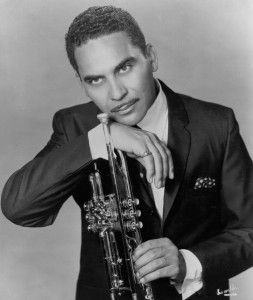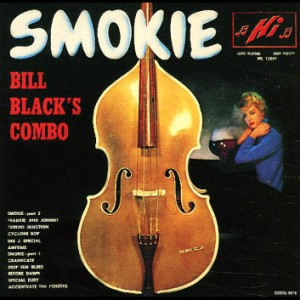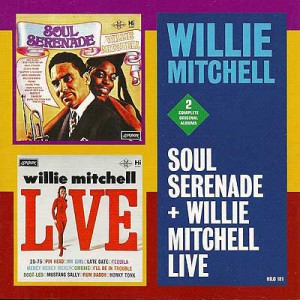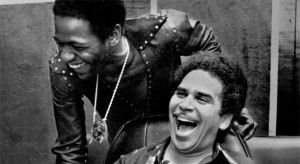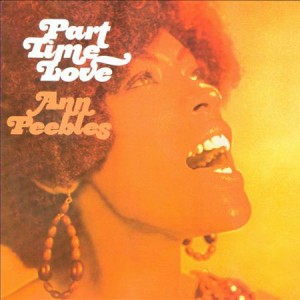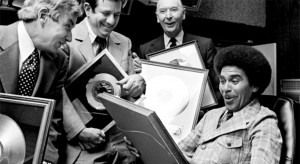The Royal Theater began its history as the Shamrock Theater in 1915. Constructed only four years after the first moving picture was shown in Memphis, it is an early surviving moving picture house. In the early 1920’s, the Rex Theater, an early open-air theater or airdome, moved from McLemore Avenue to the Shamrock (Royal) building. When the Rex was converted to sound, it was renamed the Royal and continued to serve as the neighborhood movie theater.
The Royal Theater closed in 1955. Two years later the building was led by Joe Coughi son of a neighborhood merchant. Coughi, a local musical entrepreneur, rented the building for sixty dollars a month and with partners Quinton Claunch and John Novarese converted the Royal Theater into the Royal Recording Studio, home of Hi Records.
Soon after Hi Records inception in 1956, it became known as the “House of Instrumentals.” Its early success producing instrumentals hits such as the Bill Black Combo’s “Smokey, Part 2,” “Josephine,” “White Silver Sands,” and “Don’t Be Cruel,” all million sellers, earned Hi this recognition. Each recording was a million seller.
Under Willie Mitchell, the musical direction of Hi changed significantly from rockabilly to R&B as Mitchell helped fashion the modern Memphis’ soul sound. Mitchell signed with Hi in 1963 as a session trumpetier. As a musician he had mild personal success with “20-75” before hitting big with “Buster Browne” (#29, 1965) and “Bad Eye” (#23, 1966). The pinnacle of Mitchell’s personal recording career was in 1968 with “Soul Serenade” (#10).
Though the Royal Recording Studio was nothing more than a remodeled nickelodeon, the staff felt the studio was ideal.
“Producer Willie Mitchell ascribed an almost mystical belief to the acoustics of the old Royal Theater, ‘Something about the floor. As you go down the slope, the music gets bigger, it separates.’”
After Hi president Joe Coughi’s death in 1969, Mitchell took on more production and administrative duties and soon his own recording career was eclipsed by his genius as producer of one of the most influential singers of the 1970’s, Al Green. In the early 1970’s, producer Mitchell pioneered a Memphis soul sound which scaled heights of elegant spirituality and musicianship as well as popularity.
Green began his success with “Can’t Get Next To You” (#11 R&B, 1970) and followed with his own composition “Tired of Being Alone” (#11, 1971). In 1971 Green and Mitchell teamed up on “Let’s Stay Together,” Peter Guralnik, author of Sweet Soul Music, writes:
“It marked the first full realization of Willie Mitchell’s vision of soul music on a higher plane, employing a muted string section, soft sophisticated melody with a gospel twist.”
For the next four years Green and Mitchell had a number one hit each year. This was more than Stax artists’ Otis Redding, Sam and Dave, and Booker T. & the MG’s achieved during their entire combined careers. The ethereal combination of Mitchell’s refined production and Green’s spiritual vocal gymnastics paid off not only aesthetically but financially as well. In his career with Hi, Al Green would sell more than 20 million records.
Hi and Mitchell produced other known artists including Ann Peebles (“Part Time Love” 1972, #7 R&B, and “I Can’t Stand the Rain” 1973, #6 R&B), Don Bryant (“Don’t Turn Your Back On Me”), George Jackson (“Aretha Sing One For Me”), Ace Cannon (“Tuff”), and Bobby Blue Bland’s highly influential album, “A Touch of the Blues.”
Guralnik states in “Sweet Soul Music” that “Soul music is Southern by definition, if not by geography.” Due in part to its geographical location, only 400 miles north of the jazz of New Orleans, only 200 miles west of the country music of Nashville, and only a short distance from the home of every great blues musician in Mississippi from Bo Diddley to B.B. King, Memphis assimilated many musical influences. Guralnik writes: “According to more than one observer, rock and roll music began at the Sun Studios in Memphis, Tennessee. Sun was founded by Sam Phillips, one of the first white men to record black rhythm and blues artists like Howling Wolf and the first to record the black influenced music of such young white Southerners such as Elvis Presley, Jerry Lee Lewis, and Carl Perkins.”
Royal Studios 1320 Lauderdale Sun Records was not the only studio to benefit from these influences. Stax Records also boasted a heavily integrated sound which would take the nation by storm (See the City of Memphis, Memphis Heritage, Cultural Resource Survey cover form for the Stax Production and Recording Studios August 1989). The success of Stax established Memphis as one of the great soul capitals of North America in the 1960’s. As Stax’s Success waned in the early 1970’s, Hi Records stood ready to take soul music to new ethereal heights. The connections between Hi, Stax, and Sun are numerous. Hi co-founder Quinton Claunch was a former Sun musician and songwriter. In fact, Hi Records’ first hit record, “Smokey, Part 2” (Top 20, 1959), was recorded by another former member of the Sun ensemble, Bill Black, who toured and recorded with Elvis Presley as bass player until 1959. Thus, the influence of Sun Records was very strong-providing both an education to innumerable musicians as well as an example of success for Memphis’ fledgling recording industry.
Hi Records, in turn, was highly influential to Stax Records as well. The entire rhythm section of the Stax house band had received early playing experience in Willie Mitchell’s band. Sweet Soul Music states that Mitchell’s band “were a virtual Who’s Who of Memphis jazz players-Phineas Newborn, Jr., Charles Lloyd, Booker Little, Frank Strozier, George Coleman, … Lewis Steinberg on bass, and Al Jackson Jr. on drums, one half of the original Booker T and the MG’s.”
Hi Records remains the last great success of Memphis soul music to be recognized worldwide-at least at current writing and Al Green is one of the most popular and successful recording artists in Memphis music history since Elvis Presley.
Willie Mitchell’s Royal Studios is one of the oldest perpetually operated recording studios in the world and continues to host gold and platinum selling artists such as John Mayer and Rod Stewart to name a few.
The Hi Records 1320 Lauderdale History and Cover Form, written by Judith White, March 1990.


